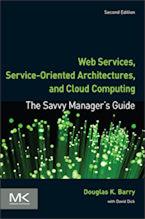Relational Model Concepts
The relational model used the basic concept of a relation or table. The columns or fields in the table identify the attributes such as name, age, and so. A tuple or row contains all the data of a single instance of the table such as a person named Doug. In the relational model, every tuple must have a unique identification or key based on the data. In this figure, a social security account number (SSAN) is the key that uniquely identifies each tuple in the relation. Often, keys are used to join data from two or more relations based on matching identification. The relational model also includes concepts such as foreign keys, which are primary keys in one relation that re kept in another relation to allow for the joining of data. As an example of foreign keys is storing your mother's and father's SSAN in the tuple that represent you. Your parents' SSANs are keys for the tuples that represent them and they are foreign keys in the the tuple that represents you.

The relational model does not support inheritance or references. More on inheritance. More on references.
Context for Relational Model Concepts
Related Articles for Relational Model Concepts
The Savvy Manager's Guide
Douglas K Barry is also the author of a book that explains Web Services, service-oriented architecture, and Cloud Computing in an easy-to-understand, non-technical manner.
Web Services, Service-Oriented Architectures, and Cloud Computing: The Savvy Manager's Guide (Second Edition)
by Douglas K Barry with David Dick
This is a guide for the savvy manager who wants to capitalize on the wave of change that is occurring with Web Services, service-oriented architecture, and—more recently—Cloud Computing. The changes wrought by these technologies will require both a basic grasp of the technologies and an effective way to deal with how these changes will affect the people who build and use the systems in our organizations. This book covers both issues. Managers at all levels of all organizations must be aware of both the changes that we are now seeing and ways to deal with issues created by those changes.

